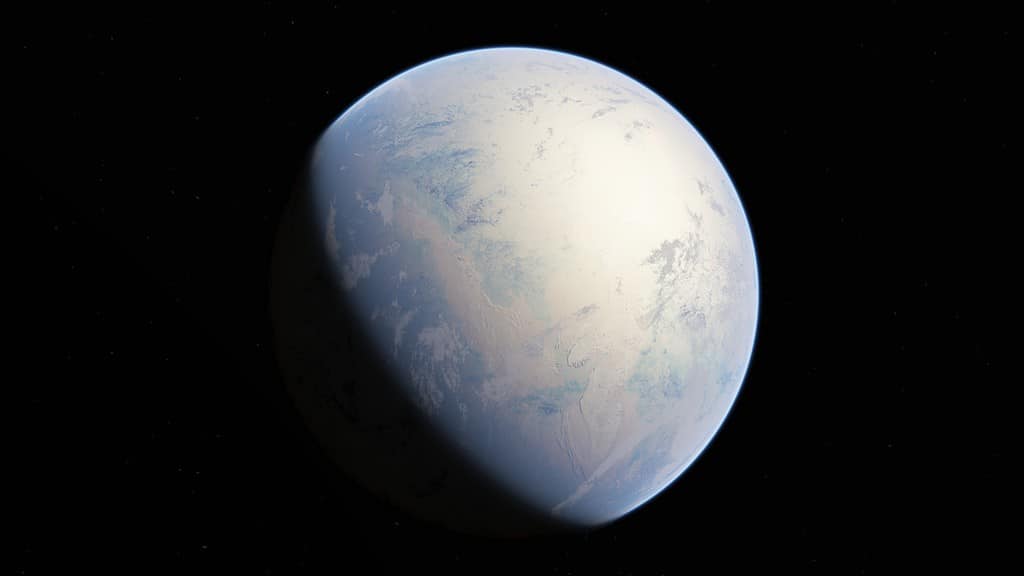
The planetary phenomenon of climate change is hard to stop. When it starts, it builds on itself and grows and grows, like a snowball, until something changes or a new equilibrium is reached. But in geological time, climate change can go both ways: the planet can heat up or freeze up.
Perhaps the most devastating event of this sort took place some 600 million years ago, when the planet became (almost literally) a snowball.
To get a feel for just one loop that makes climate change challenging to stop, think about snow and ice. Snow and ice are reflective — they reflect more of the solar energy than, say, soil or rock. When it’s hot, ice and snow melt, giving ground to more soil, which absorbs more solar energy, heats up, melts more ice, and so on. Similarly, when the ice starts accumulating, it starts reflecting more energy, causing temperatures to drop.
This cycle is important, but 600 million years ago, more factors were at play. Major tectonic activity produced new continental crust that started weathering, pulling CO2 out of the atmosphere, and cooling the planet. In addition, oxygen-producing algae had just evolved and they started dominating the environment, producing more oxygen and sucking even more heat-trapping CO2 out of the atmosphere.
The Snowball Earth was caused by factors that couldn’t really repeat in current conditions, but it holds lessons that could be very valuable today. In particular, how did life survive it?
Life vs Snow
All the algae we see on Earth today, even the ocean ones, descend from freshwater species. This suggests that the ancestors that first evolved in the salty oceans were wiped out at some point, probably during the Snowball Earth, and freshwater species survived and re-evolved into the variety of algae we can now observe. But it’s not clear how algae could survive during the freezing temperatures — and let alone other species.
Attempting to solve this conundrum, Shuhai Xiao, a geobiologist at the Virginia Polytechnic Institute and State University, and colleagues looked at tiny algae fossils preserved in pockets where, Xiao says, life could have survived.
The most recent Snowball Earth, the Marinoan Ice Age, took place between 654 million and 635 million years ago. There were no large-scale creatures at that time, and as far as we know, life was mostly limited to microscopic creatures that lived in the oceans. But how could these algae, which require sunlight and liquid water, withstand the onslaught of freezing temperatures?
To get to the bottom of things, Xiao and colleagues looked at a layer of dark shale from Shennnongjia National Forest. This isn’t just any old shale — it’s shale that dates from the Marinoan and originated in the oceans lying between 30° and 40° latitude north. So analyzing it is like opening a window to the past; not all the information is preserved, but some key pieces may still be there.
The first piece of evidence Xiao and colleagues found is algae fossils. It’s a pretty telltale sign: if algae fossils are there, it means they somehow survived the Marinoan. Furthermore, they also found nitrogen compounds. These compounds are yet another important clue, as they suggest that the ocean water was circulating freely (or almost freely) in the area, which could only mean liquid water was around.
This all points to a pocket of liquid water that found a way to remain liquid even as the Snowball Earth unfurled.
“There’s a habitable zone,” Shuhan told Science, and it’s “perhaps wider than previously thought.”
The results fit with other studies which suggested that liquid water (and life) survived north of the Equator — normally, you’d expect higher temperatures around the equator.
But not everyone is sold.
Our climate models don’t really have a way to envision liquid pockets of water at that time. This means that either the climate models are wrong, or there’s more to this than Xiao’s work suggests.
Paul Hoffman, a geologist at Harvard University who pioneered the Snowball Earth hypothesis, told Science that the idea of ice-free areas is “hard to swallow” and instead, suggests that the algae may have survived in shallow pools of freshwater on top of glaciers. We see environments like this today and they provide cold-adapted microorganisms with the refuge they need to survive.
There’s another problem: the patch of shale does date from the Marinoan, but when exactly in the Marinoan is unclear. It could be that it dates from the end of the age when the ice had already begun receding.
Ultimately, this is exactly the type of uncertainty you expect to have when trying to figure out something that happened over 600 million years ago. What this study shows more than anything else is that there’s still a lot of uncertainty and we have plenty still yet to figure out about our planet’s geological past.
The study was published in Nature Communications.






